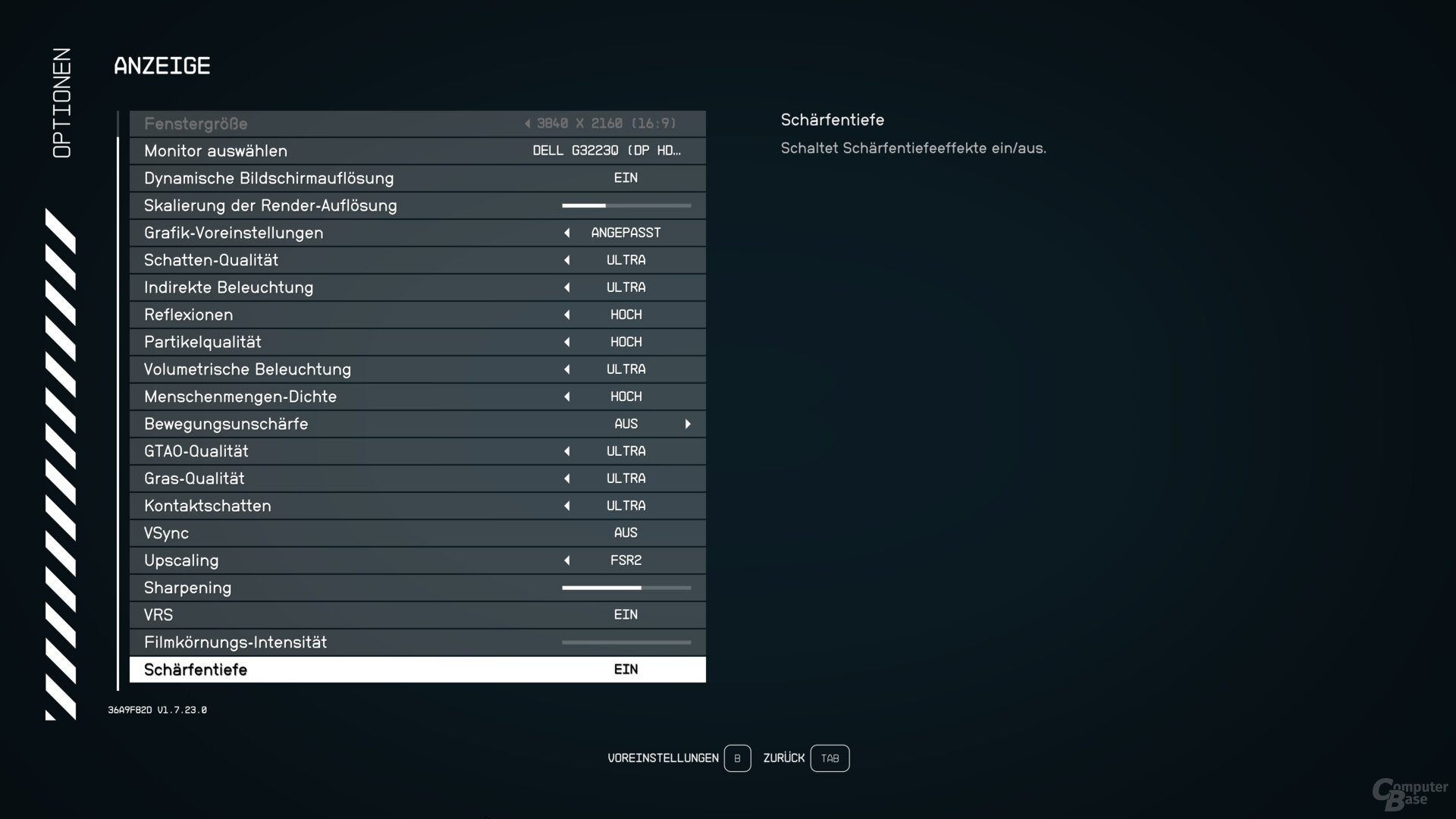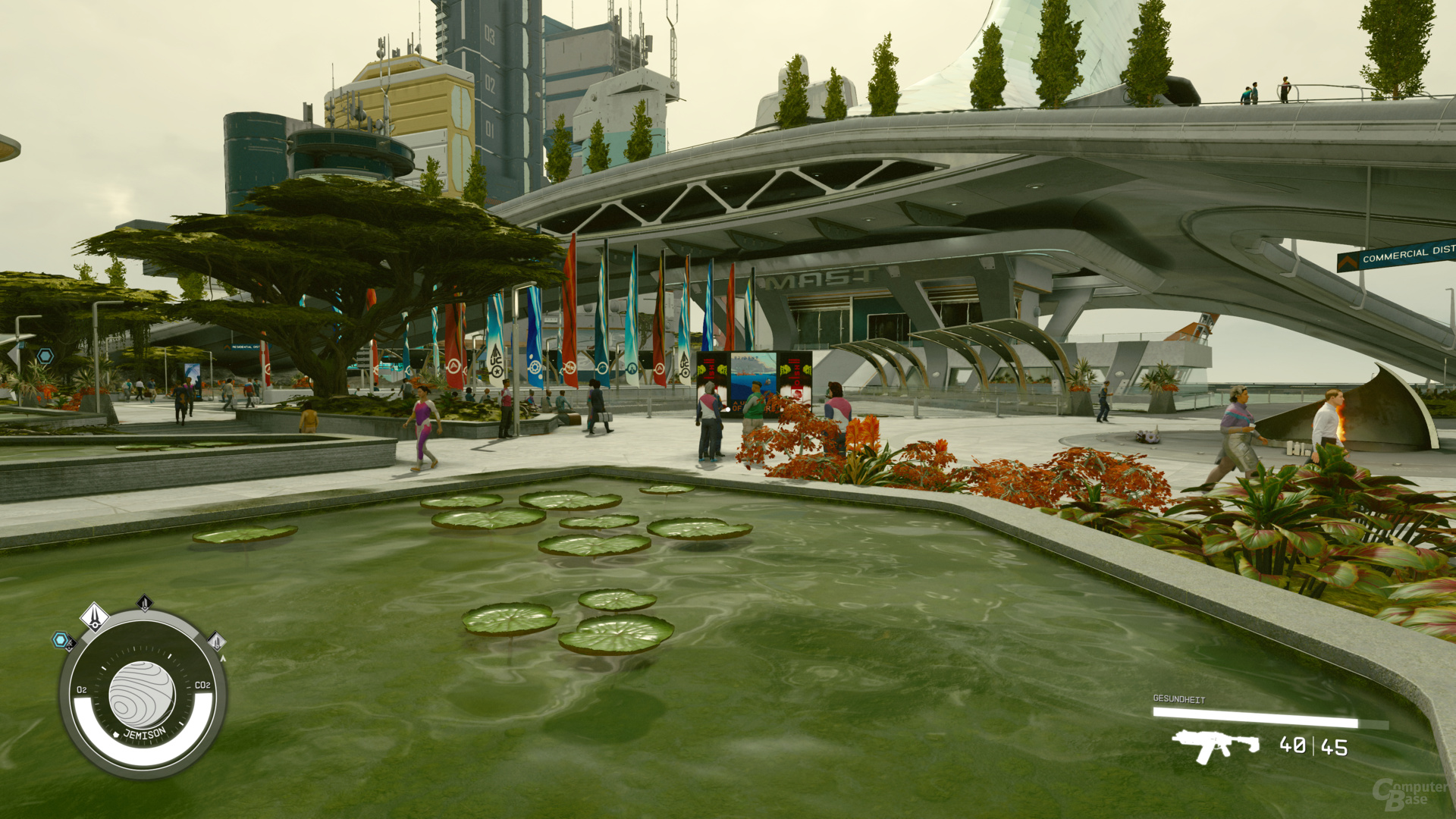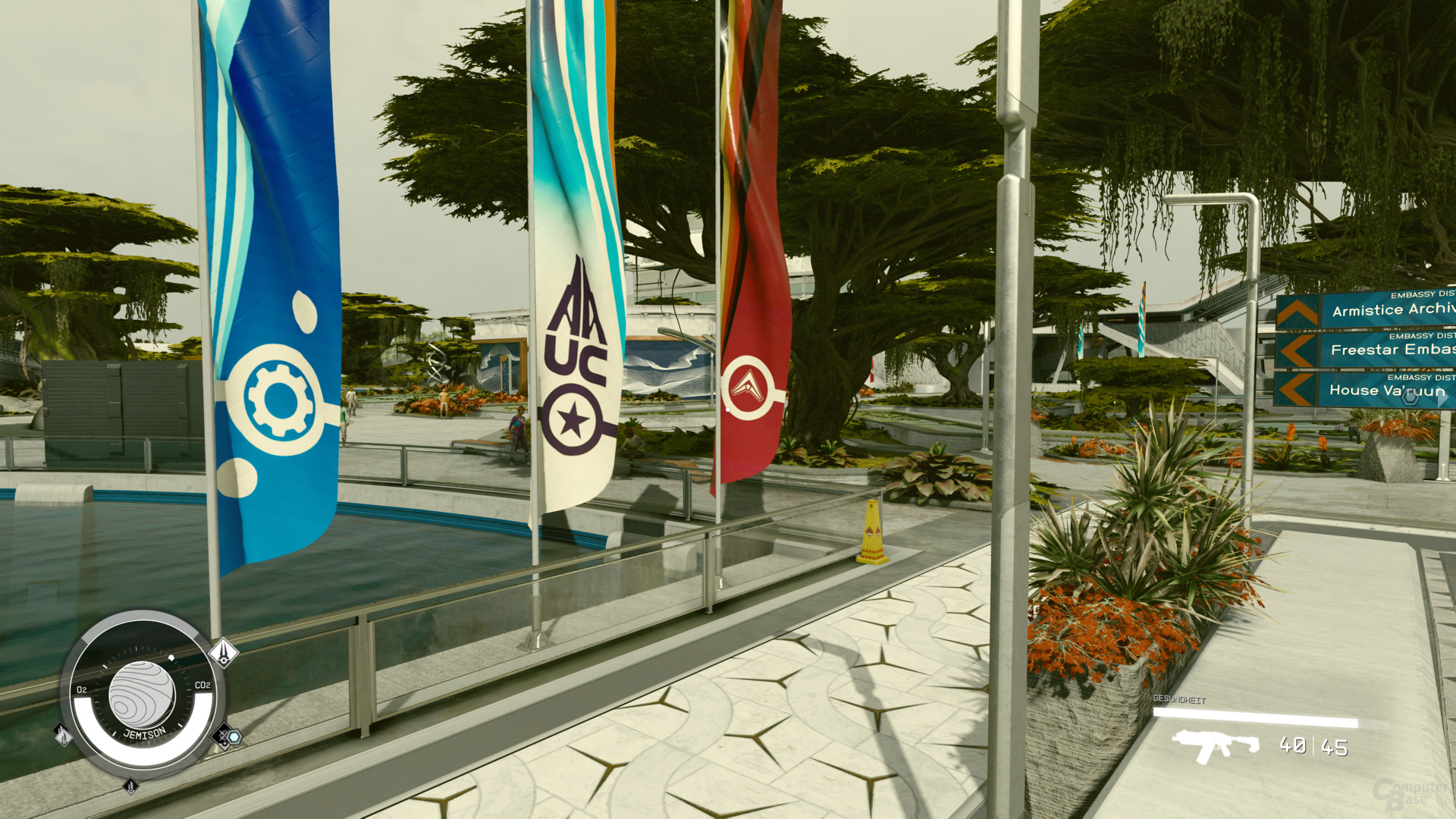Bethesda’s next big game, Starfield, is out for Premium Edition buyers, with the Standard Edition launching on September 6th. ComputerBase has performed graphics card benchmarks and technical analysis with the PC version. Among other things, the editors take a look at FSR 2, as is well known, DLSS does not exist.
Starfield: The technology of the PC version
Bethesda Gamestudios has released their next big space-first action role-playing game, Starfield. Visually, a lot has changed compared to Fallout 76 (test) and thus the last game with the in-house Creation Engine, the name “Creation Engine 2” is not in vain. The game looks much better on this basis in all respects, but the graphics can’t keep up with other current heavyweights.
Starfield has its weaknesses in terms of lighting and animation quality, for example, and other games can do a lot better with the latter. Nevertheless, the graphics are by no means bad, Starfield also looks really nice from time to time. Another advantage of the base engine, which has been significantly upgraded but is ultimately well-known, is that support for mods will probably be very pronounced again.
Without ray tracing and DLSS, but with FSR 2
Starfield does not support ray tracing, only rasterizer graphics are used. Nvidia’s temporal upsampling DLSS is also not included, the same applies to Intel’s XeSS. Not offering DLSS had been subject to great and ongoing criticism from both Bethesda and AMD weeks ago. AMD is a technology partner and has also been offering the game as a bundle title for selected Ryzen CPUs for weeks.
AMD’s FSR 2, which competes with DLSS 2, is unsurprisingly also part of the game, it can be used on Radeon, GeForce and Arc. It’s a pity, however, that the game apparently just missed the release of FSR 3 – it could have been a huge debut, but the chance was missed.
Technical tests of games have grown significantly in terms of complexity and workload in recent years. In order to be able to provide detailed reporting in a timely manner, ComputerBase has adapted the format. Tables now play a bigger role in some sections.
In addition, technology tests will appear staggered from time to time, so the entire article will not be made available at once, but will be added to successively. In order to let the reader know right from the start which content the editors are working on and which sections are still to be expected, these will be included without content as soon as they appear. The missing parts will be delivered within the next few days. However, there is no guarantee that the corresponding section will definitely appear – after all, something can always come up.
The official system requirements
The game presets in the analysis
Starfield offers four different graphic presets: “Ultra”, “High”, “Medium” and “Low”. Ultra corresponds to the maximum graphic details – with one exception, because Bethesda has also integrated upsampling and dynamic resolution (both working independently of each other) into the presets. Ultra uses dynamic screen resolution and FSR 2 with a render resolution of 75 percent, High uses FSR 2 with 62 percent resolution, and Medium and Low each use 50 percent. Variable rate shading, on the other hand, can be set completely independently of the presets.
Since the use of upsampling in the presets naturally makes a big difference in performance and potentially quality, but this has nothing to do with classic graphic details, the editors switched off FSR 2 and the dynamic resolution for the preset performance comparison in order to solely limit the impact examine the graphics options.
The optical differences between the ultra and the high preset are small. Apart from the shadows, no differences can be seen, at least in the test scene. The shadows themselves show less detail with the high setting and are also significantly softer. Objects that are further away also no longer cast shadows, probably because the maximum view range for them has been reduced.
With the medium preset, the shadows are then attacked again. They turn out to be much simpler and even look a little broken in places. Some tend to flicker, especially when moving. Apart from that, there are again no visible differences.
And you may laugh, but even with the low preset, the shadows are primarily reduced again. But that’s not all in this case. Other details such as the reflections also have to believe in it.
But all in all, it can be said: In general, the visual impact of the presets in Starfield is extremely small. When it comes to performance, things are different.
Considering that the graphic disadvantages are small, the high preset brings a decent performance jump of 15 percent on both the Radeon RX 7900 XTX and the GeForce RTX 4080. The medium preset then accelerates the GeForce by a further 15 percent, while the Radeon only accelerates by 9 percent, while the low setting brings another 10 (Nvidia) or 13 percent (AMD) more FPS.
Upsampled to Ultra HD first, then the high preset
So each quality level brings a decent, if not a particularly big leap in performance in Starfield. In view of the very high requirements of the game, the ultra preset seems to be quite useless. “High” is the editor’s recommendation even on powerful computers.
With the help of upsampling, performance can be squeezed out, at least in Ultra HD, more on the second page.
Variable Rate Shading – image quality and performance
Starfield offers variable rate shading, which should be switched on and off in the graphics menu. VRS adapts the shader quality to the complexity of the area to be calculated.
Optical differences are hardly noticeable with active VRS in Starfield, even with a magnifying glass. Yes, some pixels don’t look quite as good with VRS as without the feature, but you won’t usually notice this when playing games. The editors cannot rule out that there are a few areas of the game where the difference is larger. But this should be the exception, if at all.
On the Radeon RX 7900 XT, however, VRS has no significant effect on performance in the test sequence used, neither on the average nor on the percentile FPS. At least a small boost can be measured on the GeForce RTX 4080. AVG FPS improves by 3 percent, percentile FPS by 5 percent.
Even if the use of VRS in Starfield is small to non-existent, the editorial recommendation is to activate the feature. Because optical disadvantages are hardly to be feared.
The loading times
ComputerBase is currently still working on the content of the loading times, which will be added in the next few days by means of an update to the article. To show that the corresponding content will probably appear in the future, it is already included in the article.
Some games load incredibly fast, while others take an eternity. Equipped with a stopwatch, the editors measure the loading times to the main menu and then from there to the test sequence. Since loading times can vary, this is carried out three times in total and then an average is formed. The computer is restarted between each attempt so that there are no more files in the cache. If there are intros or video sequences that can be skipped, they are clicked away, only the pure loading time is important. If the game noticeably precompiles shaders once, this run is not included in the calculation. The shader creation time is specified separately.
It should be borne in mind that ComputerBase has a high-end PC that is equipped with a Ryzen 9 7950X3D and a Seagate FireCuda 530 as PCIe 4.0-capable NVMe, among other things. Accordingly, the loading times will be longer on most systems, the values here are only intended as a guide.
Official Steam Deck Compatibility
When games appear on the Steam platform, they often run on the Steam Deck as well. Although the technical tests do not always have the opportunity to check the performance on the portable console, Steam always gives a general classification of the titles for compatibility. How this turns out can be found here in the article.
There is currently no official statement regarding Bethesda supporting Valve’s Steam Deck. However, there are first leaks that at least indicate that the game will support the handheld console – everything else would ultimately be very surprising.








